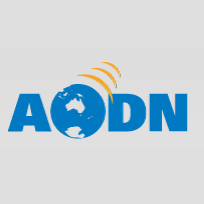Brief description
Buoys provide integral wave parameters. Buoy data from the following organisations contribute to the National Wave Archive: Manly Hydraulics Laboratory (part of the NSW Department of Planning and Environment (DPE), which has assumed function of the former NSW Office of Environment and Heritage (OEH)); Bureau of Meteorology; Western Australia Department of Transport (DOT); the Queensland Department of Environment and Science (DES); the Defence Technology Agency (DTA), New Zealand Defence Force (NZDF); the Integrated Marine Observing System (IMOS), the University of Western Australia (UWA), Deakin University; and the NSW Nearshore Wave Data Program from the NSW Department of Planning and Environment (DPE). The data (aside from IMOS, the NSW Nearshore Wave Data Program, Deakin University and some of the buoys from UWA) is gathered by the Waverider system developed by the Dutch company, Datawell. Some older wave data were collected using non-directional Waverider buoys. As technology advanced and directional measuring capabilities were developed in wave buoys, wave buoy networks were gradually upgraded to directional Waverider buoys. Therefore, some older datasets do not have directional information whereas newer datasets have directional information. The data from IMOS, the NSW Nearshore Wave Data Program, Deakin University and some of the buoys from UWA, comes from Spotter Wave Buoys, developed by Sofar Ocean Technologies, which collect data similarly to the Waverider system. The buoy data from the Manly Hydraulics Laboratory replaces data (has been re-formatted) from the following specific collection - https://catalogue-imos.aodn.org.au:443/geonetwork/srv/api/records/bb7e9d82-3b9c-44c6-8e93-1ee9fd30bf21.Lineage
Maintenance and Update Frequency: continualNotes
CreditAustralian Bureau of Meteorology
Data from the Buoys in Western Australia is kindly provided by Department of Transport (DOT)
Data from the Buoys in Queensland is kindly provided by Department of Environment and Science (DES). The following buoys are part of these joint projects: Tweed River entrance sand bypass project (Tweed Heads), Port of Brisbane Corporation (North Moreton Bay and Caloundra), Gold Coast City Council (Gold Coast), Department of Transport and Main Roads (Mooloolaba), Gladstone Ports Corporation (Gladstone), North Queensland Bulk Ports Corporation Limited (Hay Point, Albatross Bay)
Data collection of Manly Hydraulics Laboratory (MHL) buoys, funded by NSW Department of Planning and Environment (DPE) (formerly known as Department of Planning, Industry and Environment (DPIE)) (prior funding by former NSW Office of Environment and Heritage (OEH))
MHL Waverider buoy system and data management undertaken for NSW DPE (formerly DPIE) by NSW Public Works Manly Hydraulics Laboratory
NSW nearshore wave buoy data were collected, processed and provided by the NSW DPE Nearshore Wave Data Program
NZ buoys were deployed by Peter McComb, Oceanum (p.mccomb@oceanum.science). These data were collected and quality controlled by Metocean Solutions.
Australia's Integrated Marine Observing System (IMOS) is enabled by the National Collaborative Research Infrastructure Strategy (NCRIS). It is operated by a consortium of institutions as an unincorporated joint venture, with the University of Tasmania as Lead Agent.
IMOS data were collected and quality controlled by the University of Western Australia (UWA)
Wave data was provided by the Victorian Coastal Monitoring Program with funding through Department of Environment, Land, Water and Planning, University of Melbourne and Deakin University.
Created: 06 12 2018
User Contributed Tags
Login to tag this record with meaningful keywords to make it easier to discover
Bureau of Meteorology Wave Data Quality Manual (BOM_WAVE_DM_RevAOceanSenseQualityManual.pdf)
(Wave Buoy Operations and Data Management Guidelines Manual)
(ncUrlList help documentation)
uri :
https://help.aodn.org.au/web-services/ncurllist-service/![]()
Award DP748 funded by ARDC
doi :
10.47486/dp748![]()
- global : 2807f3aa-4db0-4924-b64b-354ae8c10b58


